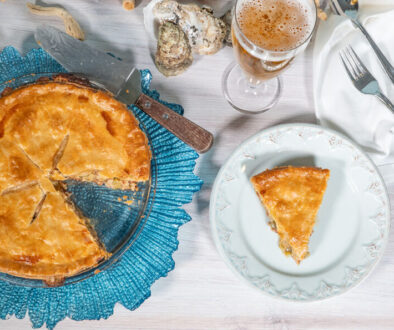Tattoos: Modern Expression & Ancient Art
“A sailor without a tattoo is like a ship without grog: not seaworthy.” -Samuel O’Reilly, tattooist, 1854–1909
For millennia, humans have tattooed their bodies to express their individuality, chronicling loves, losses, beliefs, victories, affiliations, hopes, and dreams. The oldest human discovered—5,300 years old— had 60 tattoos, and his contemporaries, from the South Pacific to the indigenous people of New Jersey, were also inked.
A visually engaging Carroll Gallery exhibit at the Emlen Physick Estate, “Tattoos: Modern Expression & Ancient Art” is on display through Sunday, November 2 and explores the art, history, and self-expression of the ancient art form of tattooing.
Queen Victoria’s son and many of her grandsons and nephews who were rulers of Europe in the 1800s were tattooed. There is a long tradition of sailors using tattoos to chronicle adventures at sea. During the 1700s, working class men enjoyed flaunting their adventures at sea with flamboyant and colorful clothes, hairstyles, and personal jewelry. Many who had been to the Polynesian societies of the South Pacific were proud of their tattoos. Navy records from the late 1700s show that around one-third of British and one-fifth of American sailors had at least one tattoo, while other accounts reveal that French, German, and Scandinavian navies were also heavily inked. By the 19th century, about 90 percent of all United States Navy sailors had tattoos.

During the 19th century, tribal tattoos fell into two categories. The first were tattoos inspired by and in imitation of South Pacific islanders, often commemorating a sailor’s visit to Samoa, Tahiti, or Hawaii. South Pacific Polynesians and their traditional tattooing only became known to Americans in the 19th century. Second were traditional tattoos of the indigenous people of the United States. Many Native Americans had tattoo traditions for spiritual, practical, and decorative purposes.
During the very late 19th and early 20th century, freak shows, sideshows, and museums of oddities became widely popular, sweeping across the United States. Tattooed ladies were among these performers. Tattoos implied the opposite of what society at that time dictated for women: obedience, modesty, and chastity. Instead, the Tattooed Lady could be seen as rejecting conventional ideas, especially concerning sex. By the early 20th century, several women tattoo artists were so successful they taught their daughters the craft. Those daughters went on to pass the skill along to their own daughters.
Tattooing has become increasingly popular in the last 20 years, and today, eight out of 10 Americans believe society is more accepting of people with tattoos. The exhibit not only delves into the history of tattooing, it celebrates the contemporary community of Cape May in special ways. Tattoo artists from Perigee Moon Tattoo in West Cape May are decorating mannequins for display with original designs. Six original photographic portraits taken this year will be on display as a distinct Cape May component of the exhibit. Mary Pat Myers of M.P. Myers Photography Studio, Cape May family and portrait photographer for more than 32 years, is the featured photographer. With her distinctive style and warmth, she has created engaging portraits of individuals—some with many tattoos, some with only one—each from the Cape May region from different walks of life. Individual stories will accompany the photographs. Submissions from the community are also included as part of the exhibit, with additional stories to tell. Visit the exhibit at the Carroll Gallery in the Carriage House at the Physick Estate—admission is free.



